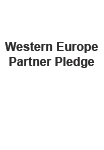In the last two years, the tightening of international data protection laws has changed the game for marketers. The GDPR in Europe, the CCPA in the US and Google's decision to end third-party cookies could shatter most existing digital marketing and data-driven marketing strategies.

Over the last decade, the way organisations use customer data has progressively shifted towards the deployment of tracking technologies for personalisation and tailored advertising offers. Third-party cookies or Apple's Identifier for Display Advertising (IDFA) are just two examples.
However, in the last two years, the mass collection of customer data through hidden or not very explicit tracking techniques seems to be slowing down due to the strengthening of data protection and privacy laws.
On 25 May 2019, the adaptation period granted to companies by the European Union to adapt to the new regulatory framework, the General Data Protection Regulation (GDPR), came to an end.
Shortly afterwards, in 2020, the United States formalised the implementation of the California Consumer Privacy Act (CCPA), which, among other things, stipulated that citizens have the right to know what data about them is being collected and what it is used for, as well as to delete their data, to know whether their data is shared with third parties and to decline the sale of personal information.
In mid-2021 Google confirmed that the decision to end third-party cookies on the world's most widely used search engine was already underway and would continue to move forward until 2022, the deadline for the crumble of the cookie.
Marketers face a complex and uncertain future. Until now they have relied on cookies —among other tools— for content creation, personalised customer engagement campaigns and to increase the effectiveness of customer acquisition.
Everything suggests that in 2022 we will really start to feel the consequences of the new approach. Less data, more protection. Less opacity, more transparency. Less free will, more consent.
In this context, companies need to start redesigning their marketing strategies and address marketing from a new perspective, mainly adopting a customer-centric approach and creating relationships with customer based on trust.
But, how?
How to approach digital marketing in the age of data protection?
1. Beyond 'accept'
In Europe, one of the most significant changes brought about by the strengthening of data protection laws has been the obligation for all companies, entities and organisations to ask users for permission to use their data. Now any website is obliged to inform users —through a detailed description of its privacy and data protection policy— of what data is being collected, what it will be used for and what cookies are being used.
Beyond being informed, users have to explicitly grant permission so that organisations can use their data —via the famous "accept" button— and should be able to customise the use of their data if they do not agree with the sites' terms and conditions.
The new laws aim to make citizens aware of what personal data companies are working with and how advertisers track them. However, for the moment, in practice, very few users read companies' privacy policies and clicking "accept" often ends up being a natural reflex.
Although most do not read before accepting, current laws will be extended and strengthened, so organisations must strive to build a relationship based on consent to withstand future regulations. Building trusting relationships with customers based on transparency is now more necessary than ever.
To do so corporations need to broaden their information channels by leveraging an omni-channel strategy. In other words, they should not limit themselves to displaying data-related information in a single channel —usually the brand's website— but should do so in every relevant channel. On the other hand, it is advisable to make the information as concise and clear as possible so that users really stop to read it. The use of explanatory videos is, for example, an effective alternative to the popular endless text.
Customers may not want to spend time reviewing content about the security of their data, but it is up to marketing professionals to find innovative ways to engage customers so that they check the information.
The goal is for organisations to start communicating information about users' data in ways similar to the way they communicate their advertising or promotional content, while explaining the benefits of "accepting".
This does not only benefit the user, but also the companies. An approach based on transparency and more effective communication with the user will bring the customer closer to the brand and strengthen the relationship.
2. Less data, more quality
One of the measures of the GDPR obliges companies to correct erroneous or outdated data about third parties. In other words, companies are now forced to ensure that their customer data is correct and up to date. In this respect, ensuring data quality is essential.
The context is also a perfect opportunity for organisations to start taking control over their data assets. The vast majority of companies have more customer data than they are aware of and definitely more than they actually use. Mass collection of incorrect or unhelpful data is no longer a trend.
Today's data strategies involve being aware of what customer data is needed —through customer segmentation models, for example— capturing only the necessary data, and striving to ensure its quality and consolidation.
Specific technologies for customer data management such as a single customer view can be of great help.
3. Data as a value proposition
One of the most effective measures companies can take is to convince customers that the collection and use of their data is beneficial to them. According to a McKinsey study, 66% of customers would accept or consider sharing their data in exchange for additional value.
Companies must therefore design a well-defined, clear and compelling data value proposition to make customers want to share their data.
The value exchange, of course, must be real and translate into in consumer benefits such as personalised customer service, discounts and offers, better customer experience, personalised customer experiences, etc. According to the aforementioned McKinsey report, 57% of customers would be happy for companies to use their data in exchange for discounts or offers.
4. Use technology to your advantage
The right technologies and tools can ease the above-mentioned procedures. Creating an infrastructure that is secure, efficient and conducive to the proper management of customer data can turn what can be perceived as almost impossible into a simple, streamlined and automated process.
In this sense, tools such as CRM, the Customer Data Platform (CDP) or a single customer view are great allies for the promotion of a transparent, secure and compliant customer-centric data strategy.
Companies that want to go a step further can combine the use of technologies with classification parameters that specify where each dataset comes from, how it was collected, what kind of consent was given by the customer, what it is to be used for, whether it complies with regulations, etc. Creating such a well-prepared data management and data governance system will prevent the company from losing data sets, having erroneous or outdated data and even using it the wrong way.
However, while data management technologies and systems can help, it is critical that businesses do not approach their data strategy from a technical perspective. Tools should only be the instrument that enables and streamlines a robust, pre-validated and customer-centric data strategy.
In brief
Technical solutions —technologies, systems, tools, etc.— are not and will not be the solution to the intensifying limits on the use of customer data. The new paradigm forces companies to build well-defined, sustainable and customer-centric data strategies. In other words, data must respond to customer needs and serve to provide them with value, not the other way around.
In this regard, digital marketing must embrace a new outlook in which transparency, trust, consent and added value must be the foundation on which customer relationships are built.
Starting to create change is not only urgent, but companies can use the current situation as an opportunity to take a leadership position on data protection and make transparency and trust a differential element and their brand's identity.



